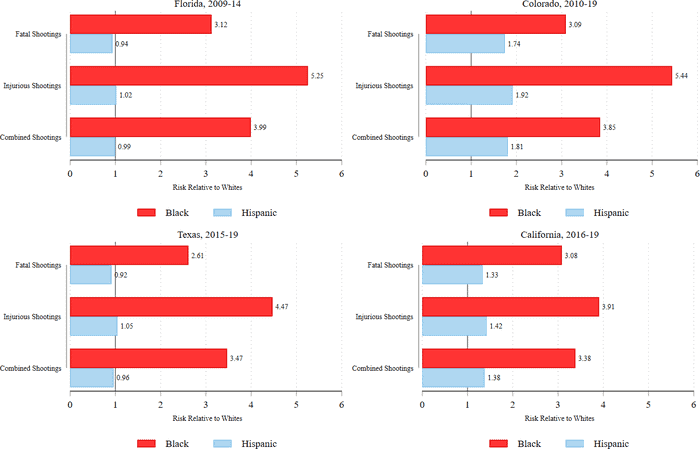An analysis of four US states finds that when you look at non-fatal shootings, the racial disparities are even greater than in fatal shootings.

According to data compiled by the Washington Post, police officers shot and killed 1001 people in the US in 2019, and 936 in 2020. Per capita, the rate of deaths for Black Americans is twice as high as that for white Americans. This is backed by studies that have found a consistent racial bias in police shootings that cannot be explained by differences in local crime rates.
However, most studies only look at fatal shootings. Not only does this data eliminate an important part of police shootings, but fatality can also be influenced by other types of factors (such as if police officers administered first aid or whether a hospital is nearby). Justin Nix of the University of Nebraska Omaha and John Shjarback of Rowan University in New Jersey wanted to analyze this data and see if they can get a more comprehensive picture of the bias.
The problem is, most states don’t even gather data on non-fatal police shootings. So they focused on four states that do gather it: Florida, Texas, Colorado, and California. They then used statistical analysis to account for demographics and other factors that could be influencing the data.
Overall, they found that Black civilians were more likely to be shot than white civilians, and the racial bias is even more pronounced than in fatal shootings. For instance, in California, Black people are 3.08 times more likely to be fatally shot, but 3.91 times more likely to be non-fatally shot. Overall, the risk of Black people suffering a non-fatal shooting was greater than that of a fatal shooting in all the analyzed four states. California actually had the smallest difference out of the four states, while in Colorado and Florida, Black people are over five times more likely to be shot than white people, the analysis found.
Hispanic people were also more likely to be shot than white people in California or Colorado, but in Texas and Florida, the differences were negligible. Here’s how the Black-white and Hispanic-white disparities compare across all four states:

There are still shortcomings to this study (for instance, there is no data on the number of rounds fired and the data is reported by the police without external verification), but overall, this paints a compelling picture of existing bias among US police shootings.
This could be better studied, the researchers say if more states would record and report data on non-fatal shootings.
“We currently have no comprehensive national data on police firearm discharges. Our study suggests there are likely hundreds of people non-fatally injured by police gunfire each year – a disproportionate share of them Black,” the authors note.
The study has been published in PLOS.



